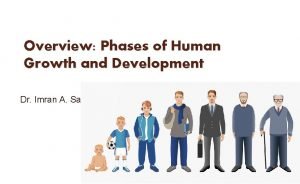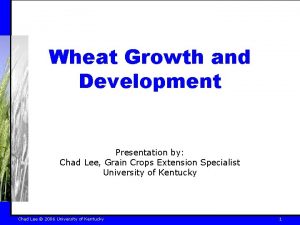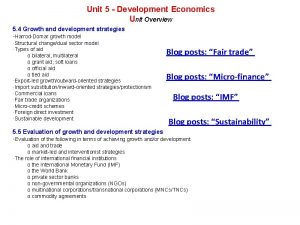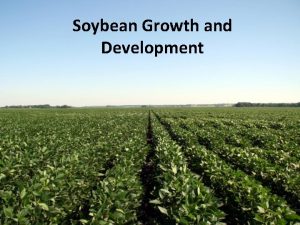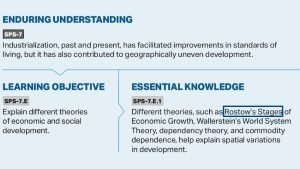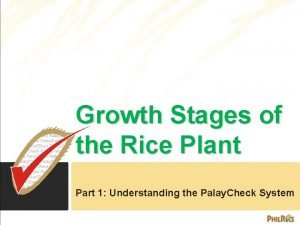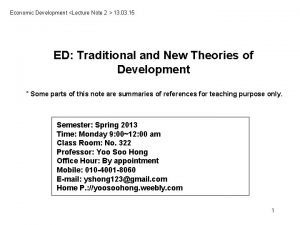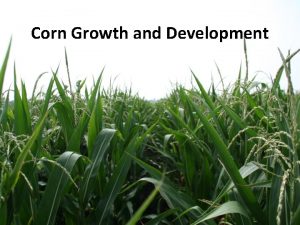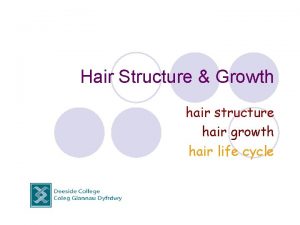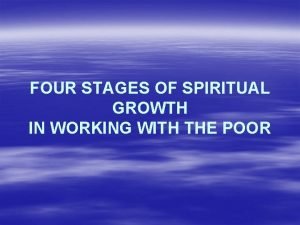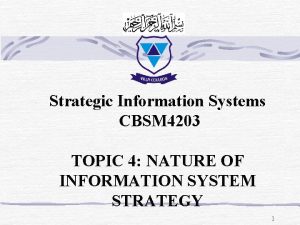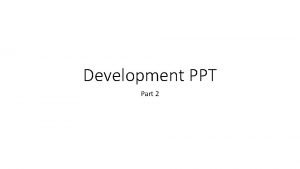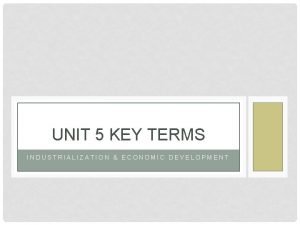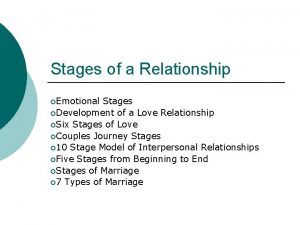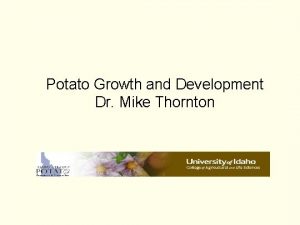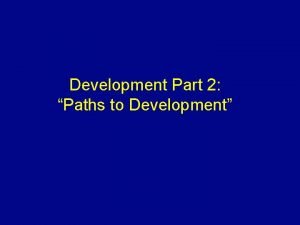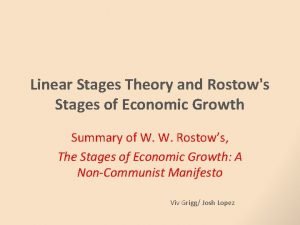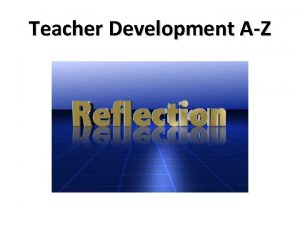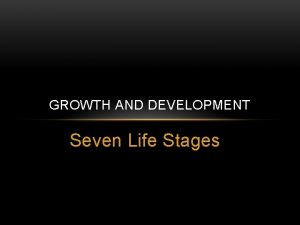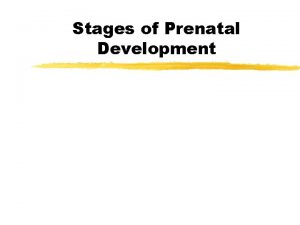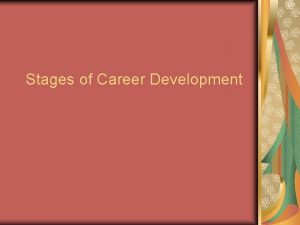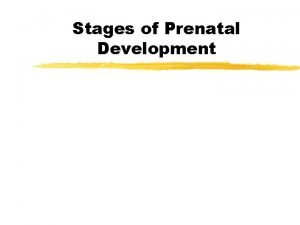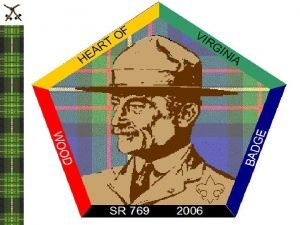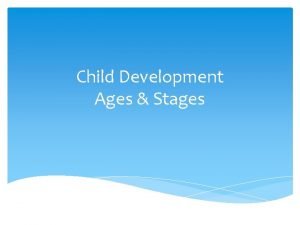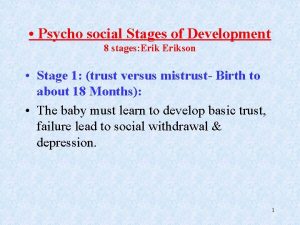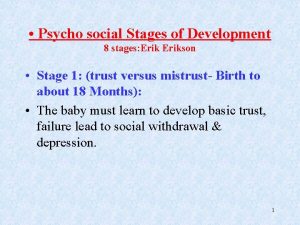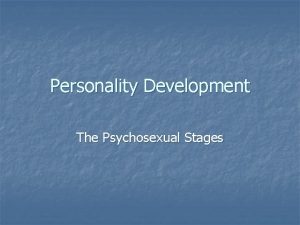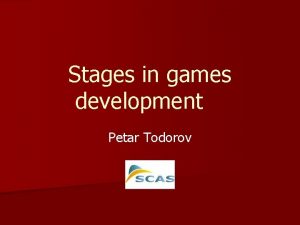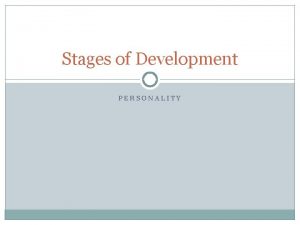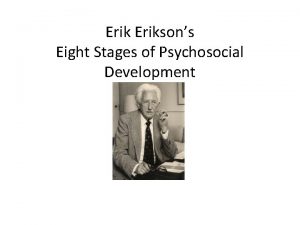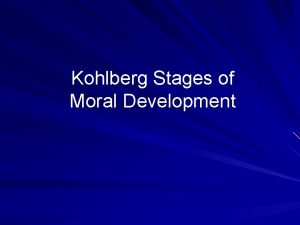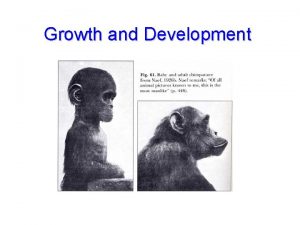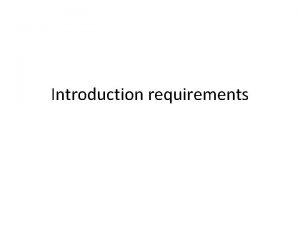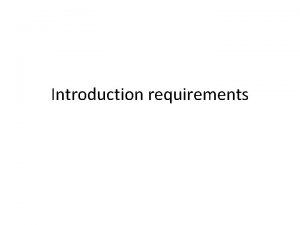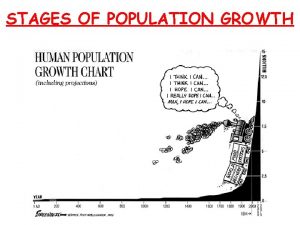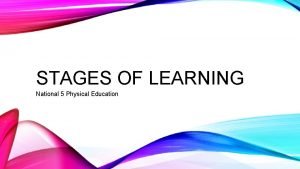GROWTH AND DEVELOPMENT Stages of Growth and Development






























- Slides: 30

GROWTH AND DEVELOPMENT

Stages of Growth and Development l l Infancy • Neonate • Infancy l • Birth to 1 month • 1 month to 1 year Early Childhood • Toddler • Preschool • 1 -3 years • 3 -5 years l Middle Childhood • School age 6 -12 years Late Childhood • Adolescent 13 -18 years

REMEMBER! Growth and development are two different processes: l Growth is an increase in physical size l Development means an increase in skills, abilities and emotions

Principles of Growth and Development l l l l Development is a continuous process (one skill lays the basis for mastery of new skills) Development is sequential (one skill cannot develop until the previous one is achieved; maturation and learning) Wide individual differences exist in growth and development rates Growth and development proceed from general to specific Growth and development proceed from simple to more complex Development proceeds “from-head-to-toe” Development proceeds “from-inward-to-outward”

Growth and Development Pattern Development occurs in “head-to-toe” and “inward-to-outward” direction.

What is the difference between growth and development? Growth is an increase in the size, weight and height of an individual. It is a quantitative change that can be easily measured in metric or imperial units Development is an improvement of one’s abilities and skills. It is a qualitative change that cannot be measured in metric or imperial units

PHYSICAL DEVELOPMENT It is the process by which children gain control of their muscles Physical development is important because: 1. It allows new learning to take place 2. It allows further development to take place 3. It affects children’s confidence and self-esteem

Physical development is grouped into the following areas: FINE MOTOR: GROSS MOTOR: • Fine manipulative skills (using fingers) • Gross motor skills (using whole limbs) • Fine motor skills (using the whole hand wrist) • Locomotive skills (skills that help to move from one place to another) CO-ORDINATION: • Hand-eye coordination • Foot-eye coordination • Balance

Children go through many different stages of physical development

Gross Motor Development l l Newborn: barely able to lift head 6 months: easily lifts head, chest and upper abdomen and can bear weight on arms

Head Control Newborn Age 6 months

Sitting up l l l 2 months old: needs assistance 6 months old: can sit alone in the tripod position 8 months old: can sit without support and engage in play

Sitting Up Age 2 months Age 8 months

Locomotive skills l l 9 month old: crawl 1 year: stand independently from a crawl position 13 month old: walk and toddle quickly 15 month old: can run

Locomotive skills 13 months old 9 months old

Fine Motor - Infant l l l Newborn has very little control. Objects will be involuntarily grasped and dropped without notice. 6 month old: palmar grasp – uses entire hand to pick up an object 9 month old: pincer grasp – can grasp small objects using thumb and forefinger

Fine Motor Development 12 -month-old 6 -month-old

Fine Motor - toddler l l 1 year old • • Can transfer objects from hand to hand Can hold a crayon and colour horizontal strokes 2 year old: • • • Can hold a crayon and colour vertical strokes Turn the page of a book Build a tower of six blocks

Toddler

Fine Motor – Older Toddler 3 year old: copy a circle and a cross – build using small blocks l 4 year old: use scissors, color within the borders l 5 year old: write some letters and draw a person with body parts l

Toddler Safety becomes a problem as the toddler becomes more mobile.

School Years: fine motor l l l Writing skills improve Fine motor is refined Fine motor with more focus • • • Building: models – legos Sewing Musical instrument Painting Typing skills Technology: computers

Early School Years

Later School Age l 8 to 10 years • team sports • match sport to the physical and emotional development

Adolescent As teenagers gain independence they begin to challenge values l Critical of adult authority l Relies on peer relationship l Mood swings especially in early adolescence l

Adolescents

Older Adolescents l l l Relationships Sexuality – STD’s / AIDS Substance use and abuse Gang activity Driving

Young age

Middle age

Old Age
 Social changes in adulthood
Social changes in adulthood Stages of human growth and development pictures
Stages of human growth and development pictures Emotional changes in childhood
Emotional changes in childhood The stages of growth and development
The stages of growth and development Slidetodoc
Slidetodoc Rice plant morphology
Rice plant morphology Feekes growth stages
Feekes growth stages Stem vegetables
Stem vegetables Harrod domar growth model
Harrod domar growth model Soybean growth stages
Soybean growth stages Rostows stages of growth
Rostows stages of growth Life cycle of a tiger with labels
Life cycle of a tiger with labels Sri system of rice intensification
Sri system of rice intensification Rostow's model
Rostow's model V stages of corn
V stages of corn Basic hair structure
Basic hair structure 5 stages of spiritual growth
5 stages of spiritual growth Nolan's stages of growth model
Nolan's stages of growth model Main concept of the world system theory
Main concept of the world system theory Rostow's model
Rostow's model Susan campbell relationship stages
Susan campbell relationship stages What are the stages of potato growth
What are the stages of potato growth What is development
What is development What are the 5 stages of rostow's model
What are the 5 stages of rostow's model What is growth analysis
What is growth analysis Shoot system
Shoot system Primary growth and secondary growth in plants
Primary growth and secondary growth in plants Vascular ray
Vascular ray Step growth polymerization vs chain growth
Step growth polymerization vs chain growth Geometric growth population
Geometric growth population Neoclassical growth theory vs. endogenous growth theory
Neoclassical growth theory vs. endogenous growth theory

